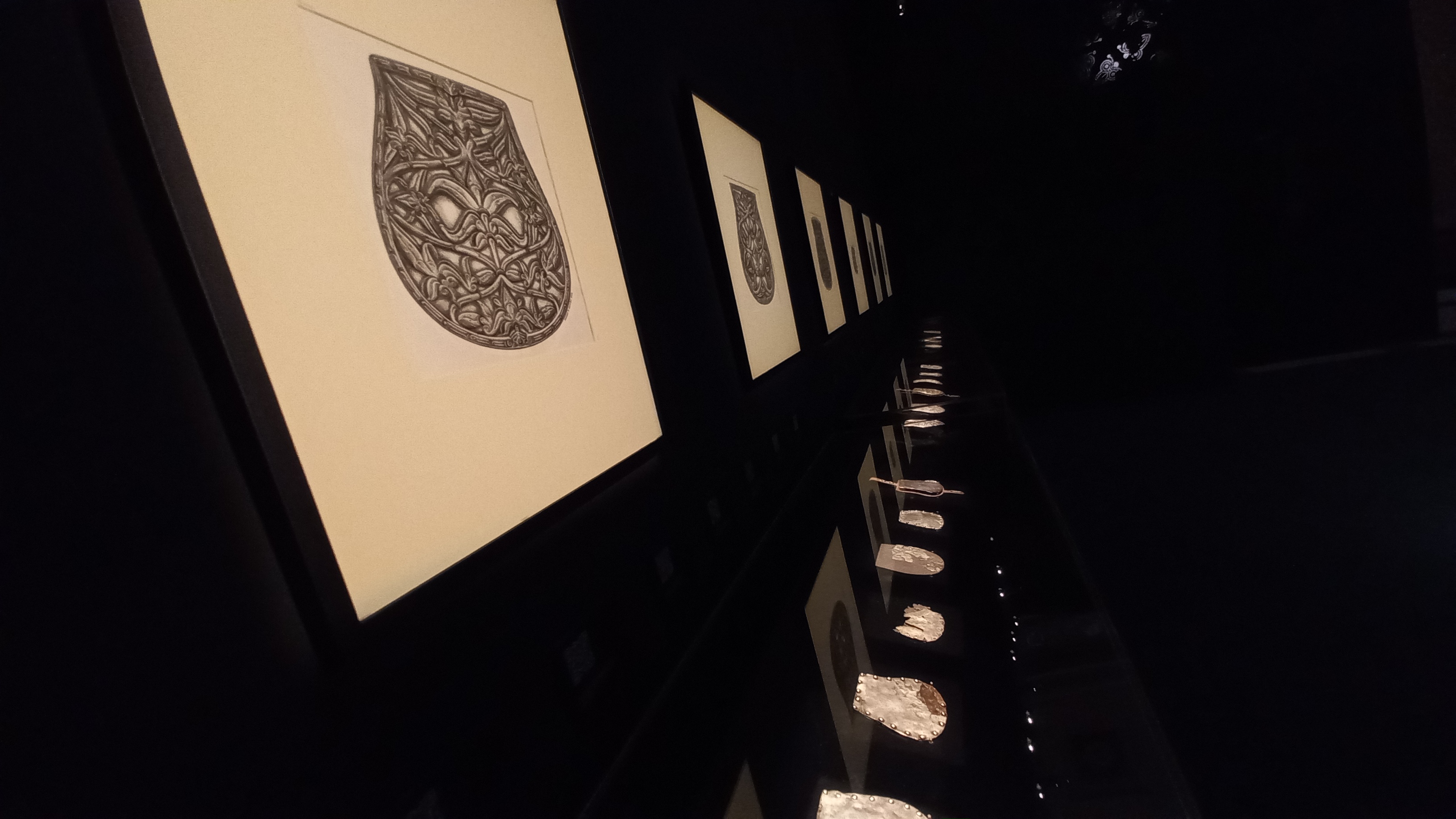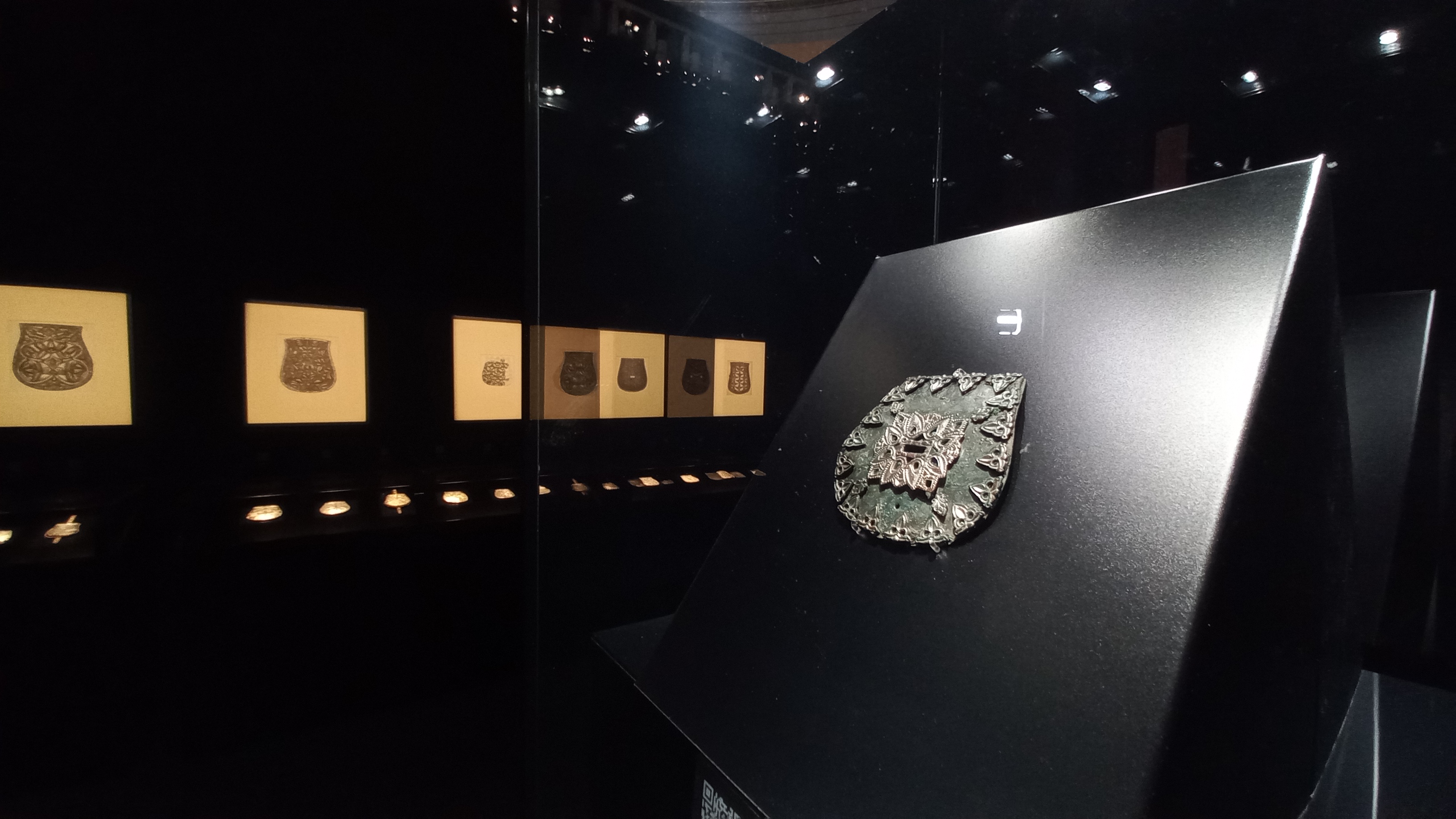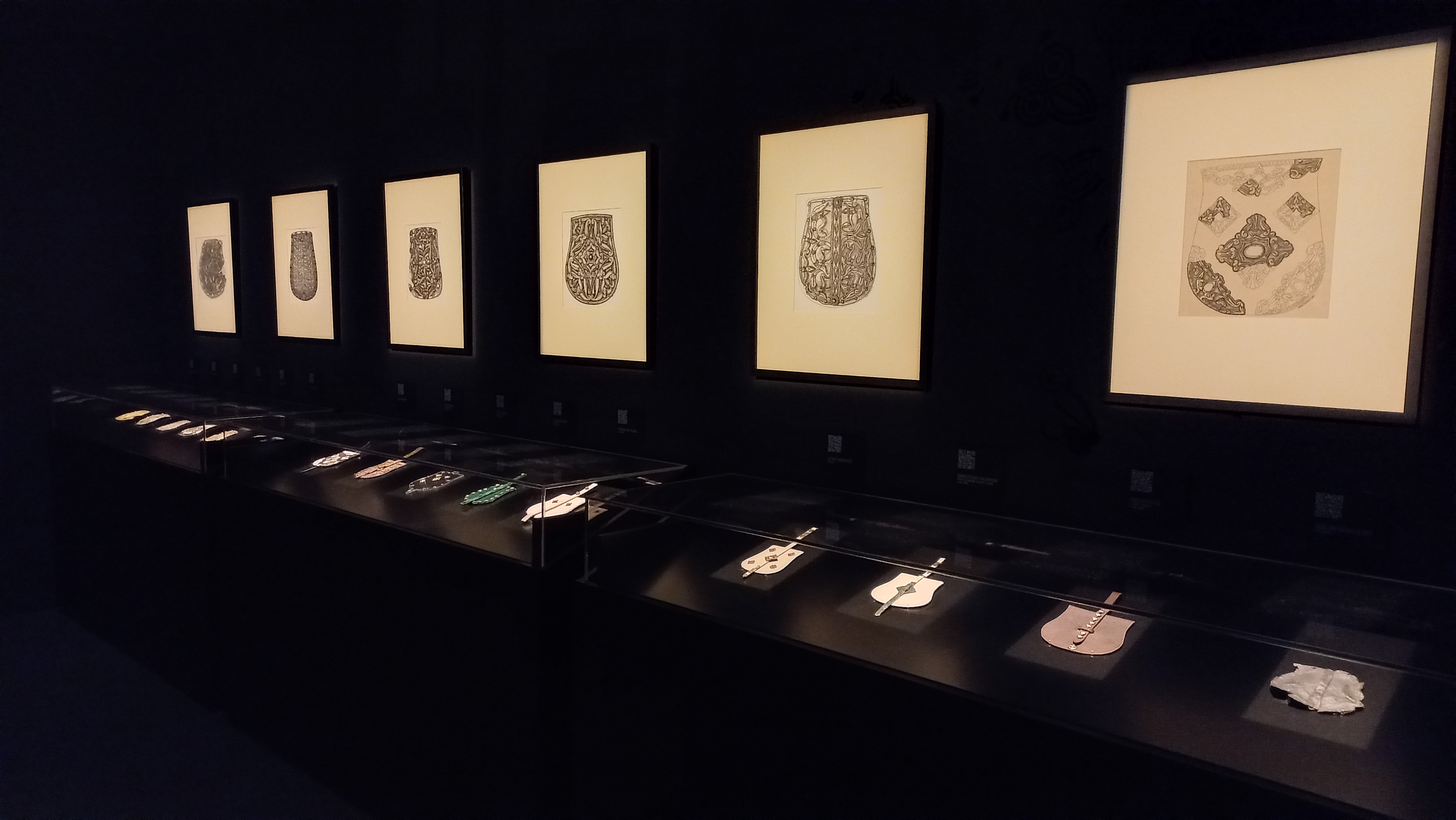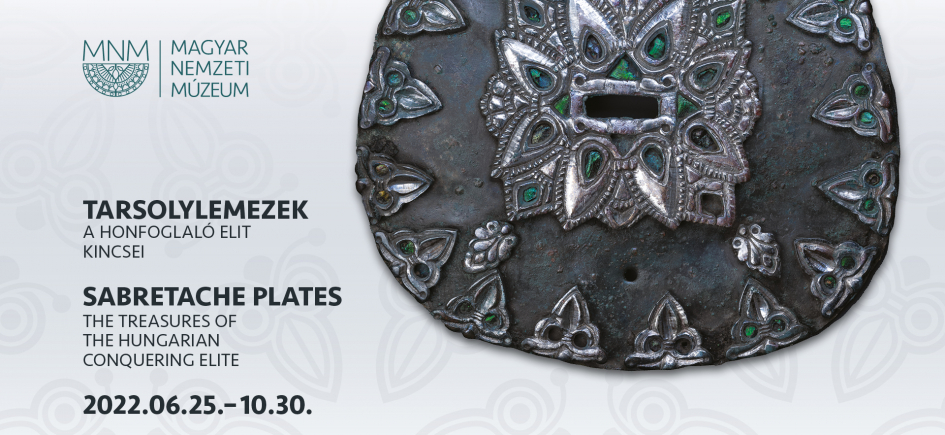
The treasures of the conquering elite

TICKETS
Men could represent their rank and position in the strict tribal or clan-based hierarchy of the Hungarian society only by objects they were entitled to wear. Hungarian men of the 10th century belonging to the military entourage of princes or chieftains could primarily express their ranks by wearing weapon belts with precious metal mounts and suspended ornamented weapons and tools.
Hungarian men held their essential tools (particularly the fire-starting kit of the age, that is, fire steel, flint and tinder) in their typically leather sabretaches suspended on the right side of their belts. The sabretache’s front flap was occasionally ornamented with bronze or gilded silver mounts, or contiguous plates (sabretache plates) as early as around the 900s. The ornaments on the sabretaches (plates and mounts) were typically Hungarian rank indicators of the 10th century; moreover, some regard these as power insignia of the dignitaries serving the prince’s family. They could have belonged to the military escort of Hungarian great princes, or were probably leaders or high-ranking participants of the raids. The number of such artefacts ever displayed in a museum is extremely low, we only know about 27 sabretache plates and 13 ornamental mounted or leather sabretaches including the recently found pieces. Most of them were found in the upper region of the River Tisza, some around the boundaries of Transdanubia and Upper Hungary, but not even one has ever been found in other core areas (e.g., Transylvania, southern Hungary).

Ornamented pieces represent outstanding examples of 10th century Hungarian goldsmithery. However, it was not ornamentation that expressed ranking, but the right to wear these objects and other insignia (such as gilded silver-plated belt mounts, sabers, quivers holding arrows, or harness decorations).Sabretache mount ornaments gradually lost their significance in the rapidly transforming society and their use discontinued after the Hungarian raids had stopped (after 955/970). Hungarian great princes consolidated the central power with a firm hand in the last third of the 10th century, which implied the internal relocation of the population, and the organisation of a new Western-type military escort. The onetime colourful Eastern clothing and the art behind it vanished.

A Hungarian Conquest period cemetery consisting of 77 undisturbed graves were unearthed in the vicinity of Páty settlement at the very beginning of 2022. Two graves also included insignia, namely sabretache ornaments, which suggests burials of extremely high-ranking men. Similar complete sabretache ornaments unearthed by applying contemporary archaeologoical methods were last discovered in 2011, while only as few as 38 pieces of such artefacts have been previously known from the Carpathian Basin so far. A further significance of the finds of Páty lies in the fact that sabretaches have been found together with their content (flint fire steel, and whetstone).

The front flap of the mounted leather sabretache was braced with a bronze plate from the back, while the front was ornamented with a central rectangular mounted belt loop; its corners and edges were also decorated with further mounts fitted tightly to each other, whose majority were ornamented with piercings, where the structurally coloured green pieces of the rose chafers’ wing plates were placed. This latter solution is considerd unique in the material legacy of the 10th century Hungarians to our recent knowledge. The application of the fragile chitin plate as decoration instead of precious stones or glass inlays has rarely been known, since its preservation requires special circumstances, while its excavation and conservation require special knowledge. The sabretache’s ca. 1.5 cm wide leather closure strap excavated from the same grave was also decorated with several ornamented mounts including a belt end with palmette decoration.
The front flap of the plated sabretache was ornamented with a 0.5 mm thin silver plate, while its back was braced with an iron plate. The remains of the organic front flap placed between the two plates were also found. The undecorated sabretache plate was cut out of a silver sheet; kerf marks are clearly detectable on the upper left edge of the plate. The silver plate and its internal metal bracing were attached to the front flap of the sabreatche with hemispheric rivets.
At the end of the campaigns against the western states and Byzantium (955 and 970) probably also weakened the power of the tribal aristocracy. Historical sources and archaeological finds suggest that the Hungarian Chieftans strengthened their central power with a firm hand in the last third of the 10th century, both by large-scale internal population resettlement and by organising a new type of military entourage around them. They tried to equip their members with Western-style weapons, and the former badges of dignity lost their role and were no longer used by the new escort. The splendour of oriental costume and art of the past has slowly faded away, left only by the magnificent jewellery that was buried in the ground in the preceding decades. These include some of its most magnificent pieces, such as purse plates and purses decorated with beads.








